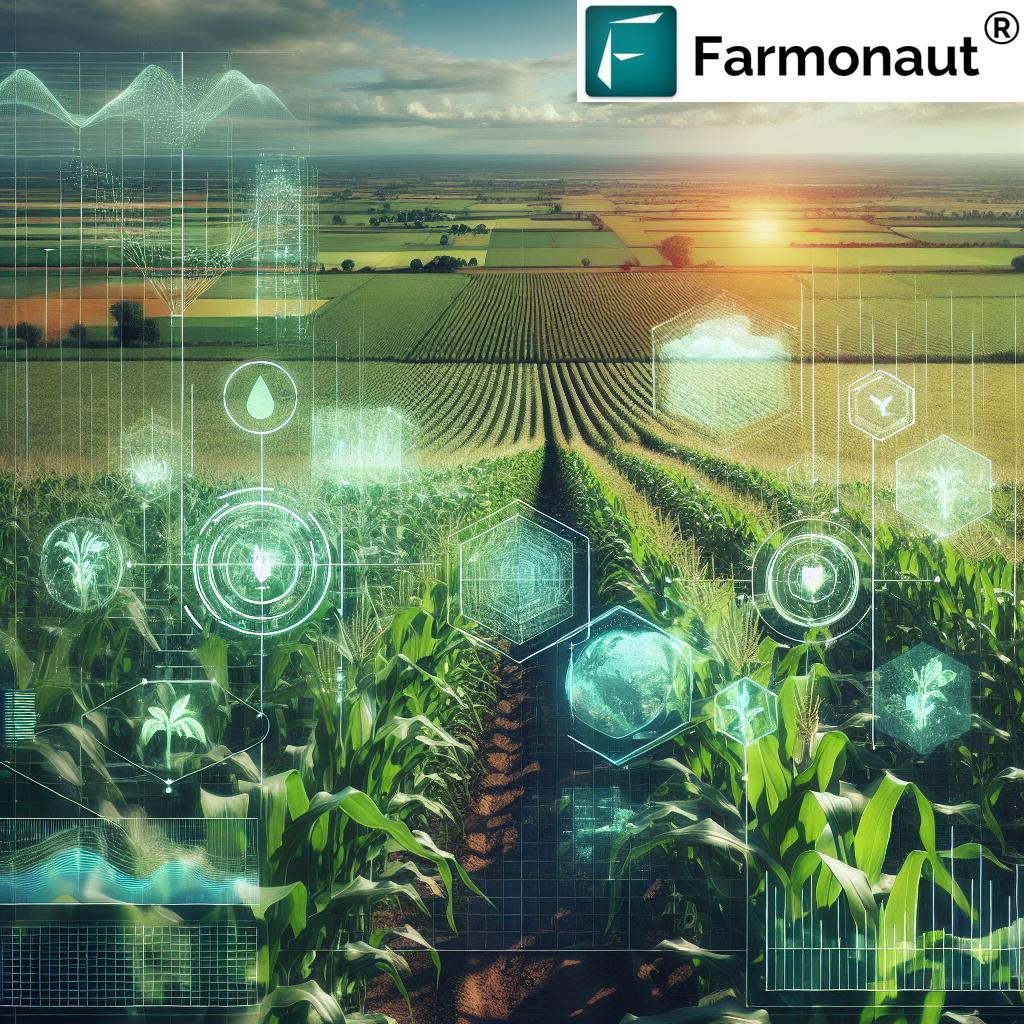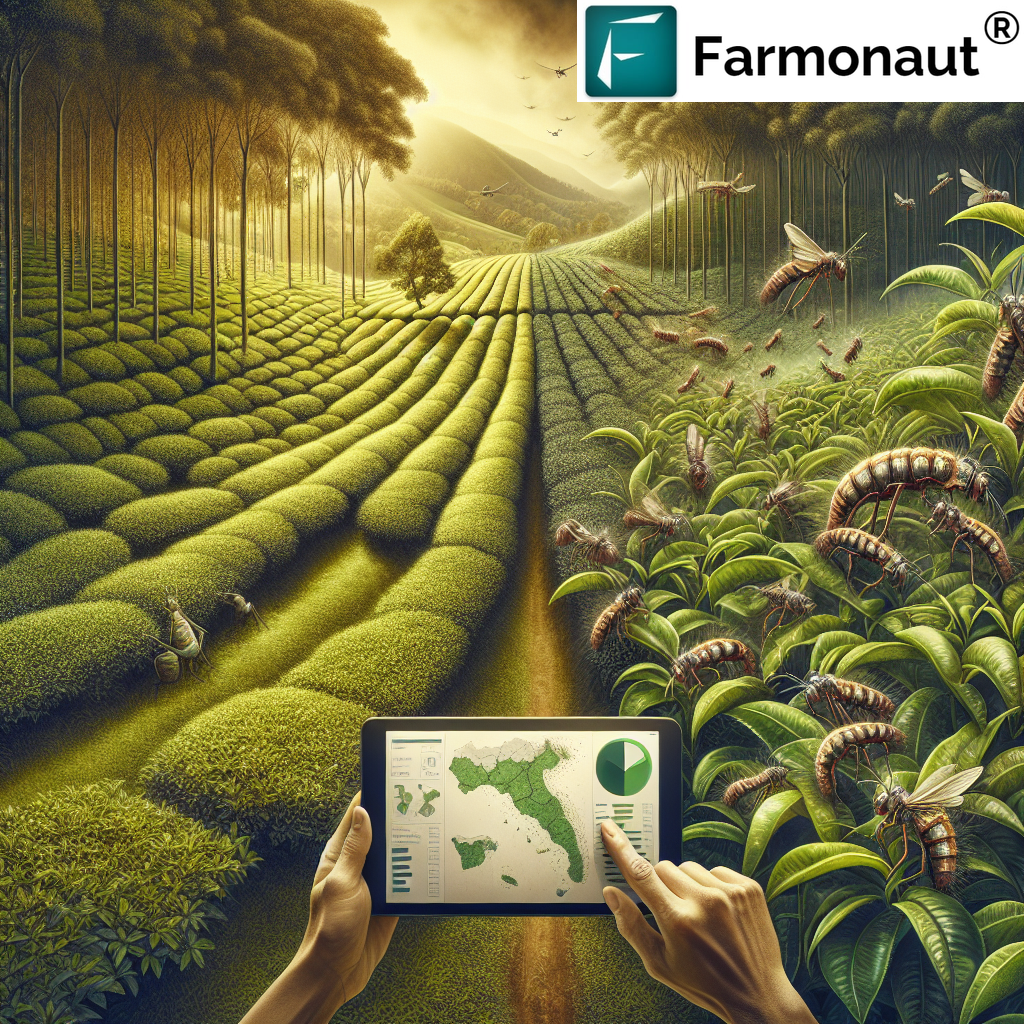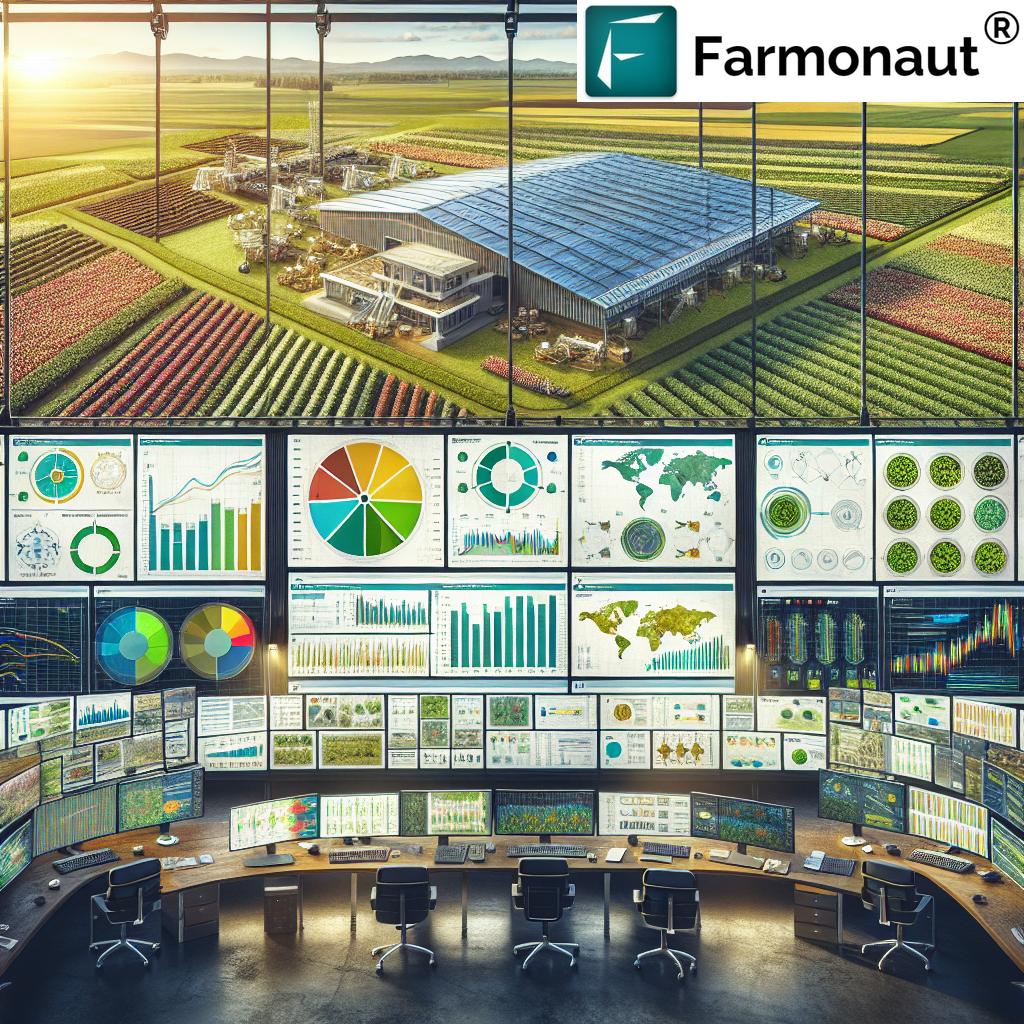Bonanza Farming 2025: Sustainable Agri Innovations
“In 2025, bonanza farms use data analytics to boost crop yields by up to 30% compared to 2020.”
Bonanza Farming: Definition and Historical Evolution
The term “bonanza farming” originates from the late 19th and early 20th centuries in the United States, where enormous commercial farms, primarily located in the American Midwest and Great Plains, redefined agriculture at scale.
Historically, these bonanza farms focused on monoculture crops like wheat, leveraging mechanization and cheap land. They thrived due to favorable market conditions, railroad expansion—which enabled efficient transport to distant markets—and the ability to implement advanced technologies ahead of their time.
Bonanza farms are characterized by:
- Vast size, often spanning thousands of hectares
- Early adoption of mechanization and new technologies
- Monoculture production (especially wheat)
- Commercial organization, often with hierarchical management and labor structure
These operations helped meet increasing food demands, laid the groundwork for industrial agriculture, and remain critical to understanding the relevance of large-scale farming models today.
“Over 50% of large-scale farms globally adopt AI-driven machinery for sustainable agriculture practices by 2025.”
Bonanza Farming in 2025: Scale and Tech-Driven Growth
The context surrounding bonanza farming in 2025 is distinct from the historical model. Today’s bonanza farms have transcended original boundaries and stand at the crossroads of technology, sustainability, and global food security.
Key Characteristics of Modern Bonanza Farming
- Large-Scale Operations: Farms that routinely cover thousands of hectares, often larger than entire rural communities from a century ago.
- Intensive Technology Use: Embracing precision agriculture, AI, IoT, and advanced biotechnologies.
- Central to Global Food Supply: These farms are critical to meeting the world’s increasing food demands, especially for staple crops and processed food industries.
- Sustainability-Focused Innovation: Commitment to regenerative practices, resource efficiency, and reduced environmental footprint.
Technologies Fueling Bonanza Farming’s Evolution in 2025
- GPS-Guided Machinery: Enables precise seeding, fertilizing, and harvesting, optimizing both yield and input use.
- Drones: Allow for real-time crop monitoring, health assessments, and efficient pest management.
- AI and IoT Sensors: Embedded in soil and plants to track moisture, temperature, nutrient levels, and growth, supporting data-driven decisions.
- Blockchain-Based Supply Chain Traceability: Enhances transparency and food security from farm to market.
- Genetically-Modified and Improved Seeds: Modern seeds are engineered for drought resistance, pest tolerance, and high productivity.
This intersection of scale and technology ensures that bonanza farms remain at the forefront of innovation in agriculture.
As technologies mature, the push towards precision, efficiency, and environmental sustainability is stronger than ever before. Farms are not just places of production, but digital ecosystems harnessing big data, AI, and remote sensing to optimize every aspect of agricultural operations.
Technological Innovations in Bonanza Farming: 2020 vs 2025 Estimates
To further illustrate the evolution and impact of technological advancements in bonanza farming, consider the following comparative table. It highlights shifts in technology use, impact on yields, and sustainability contributions—all of which are central to sustainable, productive agriculture today.
| Technology/Innovation | Implementation in 2020 | Estimated Use in 2025 | Impact on Yield (Estimated % Increase) | Sustainability Contribution (CO₂ Reduction, Water Savings, etc.) |
|---|---|---|---|---|
| Drones | Limited to large farm pilots; ~10% adoption | Mainstream use on >55% of bonanza farms | +20% (improved crop health monitoring, early pest detection) | Reduced pesticide & fertilizer use, 15% water savings |
| AI-Driven Irrigation | Mostly experimental, pilot studies | Adopted by ~60% of large farms | +18% (optimal water usage, reduced stress) | 25% water savings, 12% CO₂ footprint reduction |
| Precision Seeding | Adopted on ~15% bonanza farms | Common on 65% of operations | +22% (uniform plant stands, minimized resource waste) | 10% fertilizer savings, lower seed waste |
| Autonomous Tractors | Rare outside top-earning farms | Active use on 40% of bonanza farms | +12% (enhanced efficiency, reduced labor costs) | Reduced fuel use, 20% operational CO₂ savings |
| Soil Sensors & IoT | Early adoption phase; 8% use | 60% of bonanza farms estimated to use | +15% (real-time soil health, targeted intervention) | Reduced nutrient loss, water and chemical savings |
| Regenerative Methods | Pilot programs on progressive farms | Adopted by 35% of bonanza farms | +10% (improves soil fertility, long-term yield) | Significant soil carbon sequestration, biodiversity gains |
These advances enable bonanza farms to optimize production while minimizing environmental and resource impacts. This evolution is central to the resilience and sustainability of agriculture in 2025.
Farmonaut’s Carbon Footprinting solution uses satellite technology to provide real-time monitoring and calculation of CO₂ emissions for bonanza farms. This empowers farm managers to track their environmental impact, make sustainability improvements, and comply with regulatory standards—crucial for large, modern agricultural operations focused on reducing their carbon footprint in 2025.
Environmental Sustainability in Bonanza Farming 2025: Advancements and Strategies
Environmental sustainability remains a central concern—and one of the greatest challenges—for large-scale agriculture worldwide. Traditionally, bonanza farms practiced monoculture cropping, especially wheat and similar crops, leading to soil degradation, water overuse, biodiversity loss, and other lasting impacts.
The context is rapidly changing as we move further into 2025 and beyond.
Key Strategies Adopted by Modern Bonanza Farms
- Regenerative Agriculture:
Cover cropping, crop rotation, and reduced tillage are employed to restore soil health and increase biodiversity, shifting farms from extractive to regenerative models. -
Advanced Water Management:
The integration of precision irrigation systems and AI-driven monitoring systems—often enabled by platforms like Farmonaut Large Scale Farm Management—has enabled water savings exceeding 25% on some estates. -
Integrated Pest Management:
Combining drone imagery, AI-based pest detection, and eco-friendly control methods reduces pesticide use and environmental contamination. -
Use of Renewable Energy:
The installation of solar panels, wind turbines, and bioenergy systems is increasingly common and helps reduce farms’ operational carbon footprints. -
Soil Health and Monitoring:
Sensors provide real-time insights, leading to targeted fertilization and nutrient management. Innovative platforms offer ongoing satellite-based soil health tracking.
Looking for satellite-driven recommendations for soil health, carbon sequestration, and plantation optimization? The Farmonaut Crop Plantation & Forest Advisory equips bonanza farm managers with real-time AI-based insights to ensure plantations are productive and climate-smart, aligning with sustainability goals for 2025.
Economic and Social Impact of Bonanza Farming: Rural Development and Community Considerations
The economic benefits of bonanza farms are substantial, as they represent some of the most productive engines in national economies. In 2025, the impact of bonanza farming continues to reach far beyond the fields.
Economic Impact
- Critical Supply Chain Nodes: Bonanza farms supply the bulk of raw commodities crucial for food processing industries and export.
- Access to Global Markets: Enhanced by technology and digital marketplaces, these farms have wider reach and market intelligence than ever before.
- Improved Financing Options: Many operations now tap into sustainability-linked loans and satellite-based verification for crop lending and insurance, reducing fraud and improving financial security. This enables farms—large and small—to access capital for expansion or sustainability upgrades in a risk-managed manner.
Social Considerations and Challenges
- Reduced Rural Employment: Large-scale mechanization has resulted in lower demand for field labor, accelerating rural-to-urban migration. However, new vocations in agri-tech and farm management are emerging.
- Community Development: Some farms invest in community infrastructure and vocational training, supporting local economies and helping displaced workers adapt to new agricultural realities.
- Balancing Large and Smallholders: With bonanza farms setting technology standards, there is a risk of marginalizing smallholder farmers. Sector-wide training and digital access are critical for inclusive rural development.
In this evolving landscape, bonanza farms remain central not just to supplies but also to rural community welfare.
Efficient logistics and resource usage are central to the economic and operational success of modern bonanza farms. Farmonaut’s Fleet Management system is designed for tracking and optimizing farm vehicles and equipment across large-scale agricultural operations, reducing costs, and maximizing productivity.
Harnessing Satellite Tech in Bonanza Farming: How Farmonaut Empowers Large-Scale Agriculture
Today’s large-scale bonanza farms increasingly depend on digital ecosystems to ensure sustainable, productive agricultural practices. Satellite technology plays a pivotal role in this transformation—delivering real-time insights, optimizing resource use, and enabling better decision-making.
At Farmonaut, we believe the future of bonanza farming relies on affordable, accessible, and integrated digital solutions. Here’s how our technologies directly empower large farms:
- Satellite-Based Monitoring: Our platform provides ongoing remote monitoring of crop health, soil moisture, and vegetation vitality using high-resolution satellite imagery. This allows farms to detect stress, disease, or pest problems early, optimize inputs, and maximize yields—key for bonanza-scale operations spanning thousands of hectares.
- Jeevn AI Advisory System: Combining AI data analytics with satellite imagery, Farmonaut delivers actionable insights for irrigation scheduling, fertilizer planning, harvest timing, and risk mitigation—directly elevating productivity and resilience in challenging growing seasons.
- Blockchain Traceability: Using blockchain-based product traceability, bonanza farms can offer robust supply chain authenticity, transparency, and food security. This is vital for traceable food exports and meeting modern consumer and regulatory demands.
- Real-Time Environmental Impact Monitoring: We equip large-scale agricultural enterprises with tools to monitor their environmental impact—including carbon footprinting—helping them meet sustainability standards and demonstrate leadership.
- Resource Optimization via API: Farms, businesses, and developers can integrate Farmonaut’s API with their management platforms, automating data flow for real-time decision-making. Detailed documentation can be found at our API Developer Docs.
To get started with Farmonaut’s agricultural intelligence tools, simply access our Large Scale Farm Management suite or try the solution directly for plantation advisory by clicking on the App Store/Play Store buttons below. You can also use Farmonaut on the web browser.
Farmonaut Subscriptions—Unlock Full Digital Insights
The Future of Bonanza Farming Beyond 2025: Challenges and Opportunities
As we look to the future, bonanza farming is poised for further change and innovation. The challenges faced—including climate variability, supply chain risks, and evolving consumer demands—require next-generation solutions. Yet, with the adoption of advanced digital technologies, there is immense potential for transforming large-scale agriculture.
What Lies Ahead for Bonanza Farms?
- Greater Digital Integration: Farms will continue to build digital ecosystems using satellite monitoring, blockchain for traceability, and automated robotics for planting, maintenance, and harvesting.
- Advanced Crop Genetics: Genetic engineering and AI-driven plant breeding will enable new varieties resistant to drought, disease, and pests, optimizing yields for unpredictable climates.
- Climate-Smart Practices: Resilience-building strategies such as cover cropping, regenerative farming, and diversified rotations will become the norm.
- Holistic Environmental Monitoring: Technologies will make it easier to measure, report, and improve on real environmental indicators such as carbon sequestration, water use, and biodiversity at scale.
- Global Knowledge Sharing: Digital platforms will foster shared learning, enabling farms worldwide to rapidly adopt proven best practices.
Bonanza farming continues to evolve—and as it does, it remains a critical model for combining scale, innovation, and sustainability to feed the world sustainably.
Conclusion: Bonanza Farming’s Evolution, Relevance, and Sustainable Future
From its historical roots in the late 19th and early 20th centuries in the American Midwest and Great Plains, bonanza farming has evolved into a highly productive, technology-driven sector that remains central to today’s agricultural landscape. In 2025, bonanza farms are no longer just vast operations focused on monocultures (like wheat) but are modern enterprises that blend precision agriculture, environmental stewardship, and digital innovation to help meet the world’s food demands.
The relevance of this model is heightened by its ability to optimize production at scale, adapt to new challenges, and deliver sustainable outcomes for the planet. As technology continues to enable smarter farming, and as satellites, AI, and IoT become everyday tools within farms, the potential for bonanza farming to drive global food security and rural development is greater than ever. The future of bonanza farming is not just about size—it’s about resilience, sustainability, and innovation in agriculture.
Frequently Asked Questions: Bonanza Farming 2025
What does “bonanza farming” mean in 2025?
In 2025, bonanza farming refers to large-scale, highly productive agricultural operations, primarily leveraging advanced technologies—such as satellite monitoring, AI, IoT, and precision machinery—to maximize yield, minimize input waste, and ensure environmental sustainability.
How has bonanza farming changed compared to the 19th and 20th centuries?
Unlike traditional bonanza farms—which focused on monoculture crops like wheat and relied on mechanization—today’s operations integrate digital technology, sustainable practices, and data-driven decision-making. The emphasis has shifted toward resource optimization, environmental stewardship, and adaptation to climate challenges.
What are the main benefits of bonanza farming for food security?
Bonanza farms are designed to produce large quantities of staple crops, supporting national and global food supply chains. Their scale and efficiency help buffer against food shortages, while technological innovations ensure more reliable production even under unpredictable conditions.
How do bonanza farms address sustainability concerns?
Modern bonanza farming employs regenerative agriculture, precision water management, integrated pest control, renewable energy, and satellite-based monitoring to reduce environmental impact. These strategies help restore soil, reduce water use, and promote biodiversity on a large scale.
How does Farmonaut support bonanza farming?
We provide satellite-based crop health and soil monitoring, AI advisory systems, blockchain-powered product traceability, and environmental impact tools—enabling bonanza farms to make data-driven decisions, maintain compliance, and achieve their sustainability objectives efficiently and at scale.
Is bonanza farming only about monoculture crops?
While originally associated with monoculture (especially wheat), bonanza farming in 2025 includes more diversified operations, integrating crop rotation and regenerative strategies for sustainability. New technologies make diversification easier and more profitable.
Can small farms benefit from bonanza farming innovations?
Yes. Many technological advancements developed for bonanza farms—such as AI-driven advisory services, satellite monitoring, and fleet management tools—are now accessible to smaller operations. This democratizes access to efficiency and sustainability benefits.












